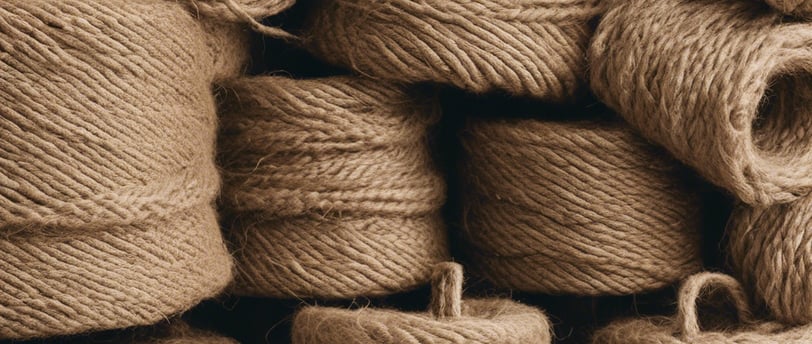From Harvest to Rope: The Sustainable Journey of Jute
Discover how jute, the golden fiber, transforms from lush green fields into durable, eco-friendly ropes. In this short guide, we explore the sustainable process—from harvesting and retting to spinning and twisting—that makes jute ropes a perfect biodegradable alternative for packaging, crafting, and more. Learn why choosing jute matters for a greener future! 🌱
11/10/20241 min read


Jute, known as the “golden fiber,” is a sustainable and biodegradable material widely used for creating eco-friendly products, like durable ropes and bags. Here’s a quick look into how this natural fiber transforms from lush green fields into the versatile jute ropes we know and use.
1. Harvesting the Jute Plant
Jute plants grow best in warm, humid climates and are typically harvested after four to six months. Farmers carefully cut the mature plants close to the ground and bundle them to start the retting process.
Retting involves soaking the bundles in water, allowing natural bacteria to break down the stalk, which frees the long, sturdy fibers.
2. Extracting and Drying the Fibers
After retting for about 10-15 days, the stalks are washed and stripped to separate the raw jute fibers. These fibers are hung to dry, ensuring that they retain their strength and flexibility.
Once dried, the fibers take on their signature golden color and are ready for processing.
3. Spinning into Yarn
The dried jute fibers are spun into yarn using traditional or mechanized spinning methods. This yarn is then twisted and wound, creating a strong base for jute ropes.
The resulting yarn can be further dyed or treated, depending on the intended use.
4. Twisting into Ropes
To create jute rope, multiple strands of yarn are twisted together, forming ropes of varying thickness and strength. These ropes are natural, sturdy, and ideal for sustainable packaging, crafting, and more.
5. Eco-Friendly and Biodegradable
Jute ropes are 100% biodegradable and compostable, making them a sustainable alternative to synthetic materials. Once their lifecycle ends, they naturally break down without harming the environment.
Why Choose Jute Ropes? Choosing jute rope supports sustainable farming and production, offering a versatile, eco-friendly material that’s perfect for packaging, gardening, and home décor. Embrace the durability and environmental benefits of jute—your choice makes a difference!
#JuteHarvest #EcoFriendly #SustainableMaterials #Biodegradable #JuteRope #NaturalFibers #SustainablePackaging #EcoProducts
Biz Njp
Sustainability Delivered At Your Doorstep
Connect with us
Join the green movement
info@biznjp.com
+351 920 504 668
© 2024 Biz NJP . All rights reserved.
